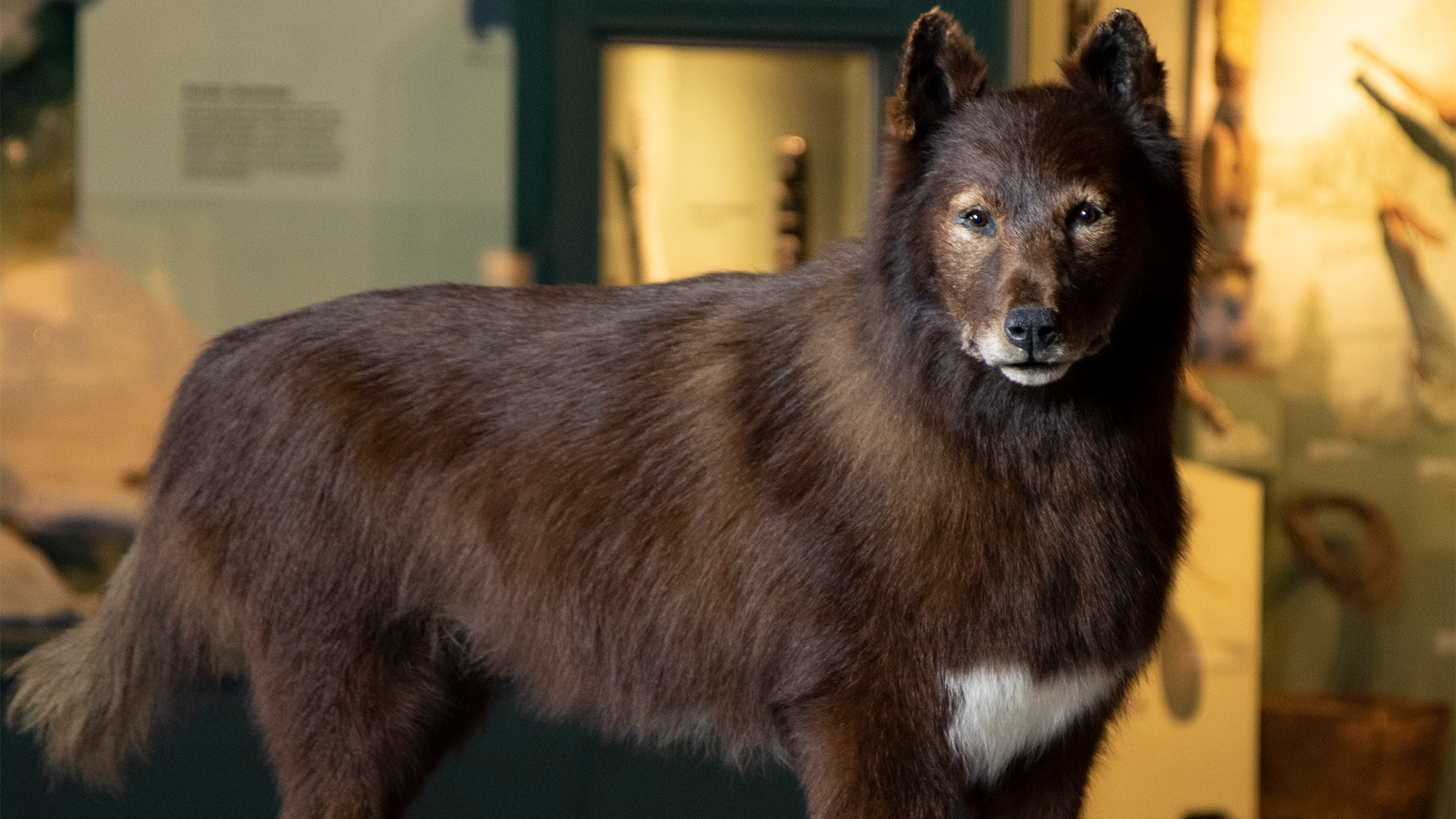

For nearly a century, Balto the sled dog has been celebrated with books, movies, and even a statue in New York’s Central Park. When a deadly infection called diphtheria swept through the isolated town of Nome, Alaska in 1925, Balto and a relay team of sled dogs traveled for six days across hundreds of miles in a raging blizzard to bring critical antitoxin to the town.
[Related: Humans have partnered with sled dogs for 9,500 years.]
Balto is still helping people 90 years after his death, but this time, with his DNA. In a study published April 17 in the journal Science, scientists detail how they sequenced Balto’s genome to learn more about the genetics of the sled dogs of the 1920s and see how they compare to modern dogs.
Balto was raised in a kennel by breeder Leonhard Seppala and belonged to a population of small, fast sled dogs that had been imported from Siberia in northern Russia. These dogs became known as Siberian huskies, but the modern versions of the breed, as well as modern sled dogs are quite different from Balto. Other living dog lineages that share this common ancestry with Balto include Greenland sled dogs, Vietnamese village dogs, and Tibetan mastiffs.
“It’s really interesting to see the evolution of dogs like Balto, even in just the past 100 years,” study co-author and postdoctoral researcher at the University of California, Santa Cruz Katherine Moon said in a statement. “Balto’s population was different from modern Siberian huskies, which have since been bred for a physical standard, but also from modern working Alaskan sled dogs.”

The team extracted DNA from tissue samples of Balto’s taxidermied remains from the Cleveland Museum of Natural History to investigate his genetic traits and ancestry. They found that Balto shared only part of his ancestry with Siberian huskies, and that he actually belonged to a population of working sled dogs that were more genetically diverse than modern breeds.
The researchers also found evidence that his population was genetically healthier than modern breeds. “Balto came from a population of working dogs that were different from modern breeds and were adapted to harsh conditions,” said coauthor Beth Shapiro, an evolutionary biologist from UC Santa Cruz, in a statement.
To analyze Balto’s genome, the team needed to compare it to a dataset of 682 genomes from modern wolves and dogs, as well as an alignment of 240 mammalian genomes developed by the Zoonomia Consortium, an an international collaboration effort to find the genomic basis of shared and specialized traits in mammals.
[Related: Humans probably have big brains because we got lucky.]
According to Shaprio, a key innovation behind this study is the ability to align the genomes of hundreds of species so that corresponding positions in different genomes can be compared. Comparing these genomes can then reveal DNA sequences that are the same across species and haven’t been changed during millions of years of evolution. This stability is an indication that these parts of the genome are important, and these crucial bits are where mutations could be especially harmful.

“A gene that’s on one chromosome in us is on a completely different chromosome in another species,” Shapiro said. “You need a tool that can line them up so you can see which parts of these genomes are the same and which are different. Without that it’s just a bunch of genomes of species that are very divergent.”
The study on Balto’s DNA used this approach to characterize genetic variation seen in Balto compared to modern dogs. Populations of working sled dogs like Balto were more “genetically healthy” than breed dogs due to lower burdens of rare and potentially damaging variations in their genes. The team also identified protein-altering, evolutionarily constrained variants in Balto’s genes related to tissue development, which could represent beneficial genetic adaptations.
Variations in genes related to skin thickness, joint formation, coordination, and weight were also found, and Balto had a better ability to digest starch compared to Greenland sled dogs and wolves. However, Balto’s ability to digest starchy foods is still not as strong as modern dogs.
The team was also able to use this genetic treasure trove from Balto’s genome to reconstruct his physical appearance, including his coat color, in more detail than even historic photos could reveal. “This project gives everyone an idea of what’s starting to be possible as more high-quality genomes become available to compare,” Moon said. “It’s an exciting moment because these are things we haven’t done before. I feel like an explorer, and once again Balto is leading the way.”
